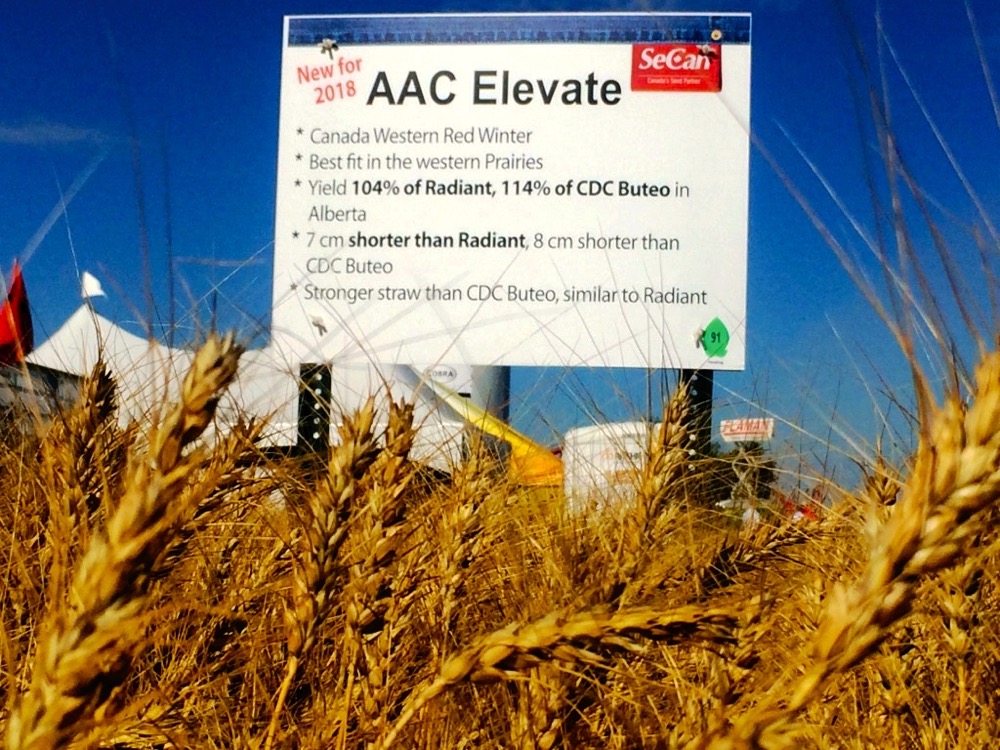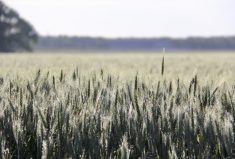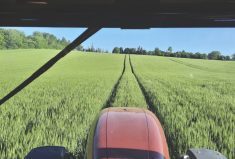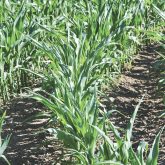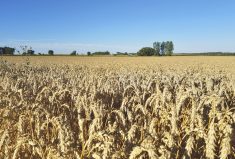Higher milling quality and larger and more consistent supplies are key to expanded markets for Prairie winter wheat. Rob Graf, long-time breeder at Agriculture and Agri-Food Canada — Lethbridge Research and Development Centre, says four varieties either available or in the pipeline should help meet those goals.
AAC Elevate
Available since last fall, AAC Elevate is about six per cent higher-yielding than Radiant, which has served as a standard variety red western winter wheat for more than a decade in Alberta. It also replaces Radiant as the LRDC’s go-to variety for wheat curl mite resistance.
Read Also

Could crop sharing be a viable option for your farm?
Crop sharing could be a good option for young and beginning farmers.
“The whole idea behind Elevate was to develop a line that would fit right across the Prairies, with good resistance to stem, leaf and stripe rust, common bunt, fusarium head blight (FHB) as well as wheat curl mite resistance to combat wheat streak mosaic virus,” Graf says.
“From that standpoint, Elevate is moderately resistant to stem rust and features intermediate resistance to leaf rust. Unfortunately, over the years we’ve seen some minor race shifts in the stripe rust pathogen. When we registered the line it looked quite good for stripe rust but it’s now in that moderately susceptible to perhaps even susceptible range.”
Graf adds that Elevate is moderately resistant to bunt and is rated as intermediate for FHB resistance.
“One of the things that’s really interesting about Elevate is that when you go to the drier sites it really tends to shine,” Graf says. “Anecdotally at least, it seems to have a superior drought-tolerance package.”
AAC Wildfire
“This variety looks like a real breakthrough in terms of yield,” says Graf. This hard red winter wheat, set for commercial availability this coming fall, is yielding about 14 per cent over Radiant in Alberta and 14 to 18 per cent over CDC Buteo in Saskatchewan.
“It has very good winter survival, good lodging resistance and is rated resistant to stripe rust and moderately resistant to both bunt and FHB,” Graf says.
However, Wildfire does not feature protection against stem rust, making it less of an option for winter wheat producers in Manitoba and eastern Saskatchewan. “I wouldn’t recommend it on the eastern Prairies simply because of that,” Graf says.
Wildfire may also require a learning curve for producers used to earlier-maturing varieties. “Compared to some varieties that farmers are used to, it’s a little bit later maturing, but that later maturity is also contributing to its bump in yield.”
AAC Goldrush
This hard red winter wheat, planned for availability in 2019, tends to be best suited for Saskatchewan, Graf says.
“Its genetic package tends to not do as well in Alberta but really shines in Saskatchewan. On average it’s yielding 11 to 14 per cent higher than CDC Buteo in Saskatchewan, has very good winter survival, good lodging resistance and moderate resistance to stem rust.”
Goldrush is also resistant to leaf rust and features intermediate resistance to stripe rust. “It’s also been rated intermediate in resistance to FHB so it’s quite a good package for Saskatchewan and into Manitoba.”
It’s not entirely surprising that Goldrush performs best on the eastern Prairies as it has a genetic background similar to Buteo, Graf says.
“CDC Buteo, which was developed at the University of Saskatchewan, tended to be at something of a yield disadvantage in Alberta compared to Radiant — which came out at the same time — but did very well in Saskatchewan.”
AAC Icefield
This hard white winter wheat was bred for the specific purpose of developing a winter wheat suitable for products popular in the Asian market such as noodles and steamed bread. It’s also expected to hit the market sometime in 2019. “It will be an identity-preserved type of wheat which we hope will garner a higher price,” Graf says.
Icefield’s yield results have generally been encouraging, showing a five to six per cent advantage over Radiant in Alberta and CDC Buteo in Saskatchewan. “It has good leaf, stem and stripe rust resistance as well as intermediate resistance to fusarium,” says Graf.


